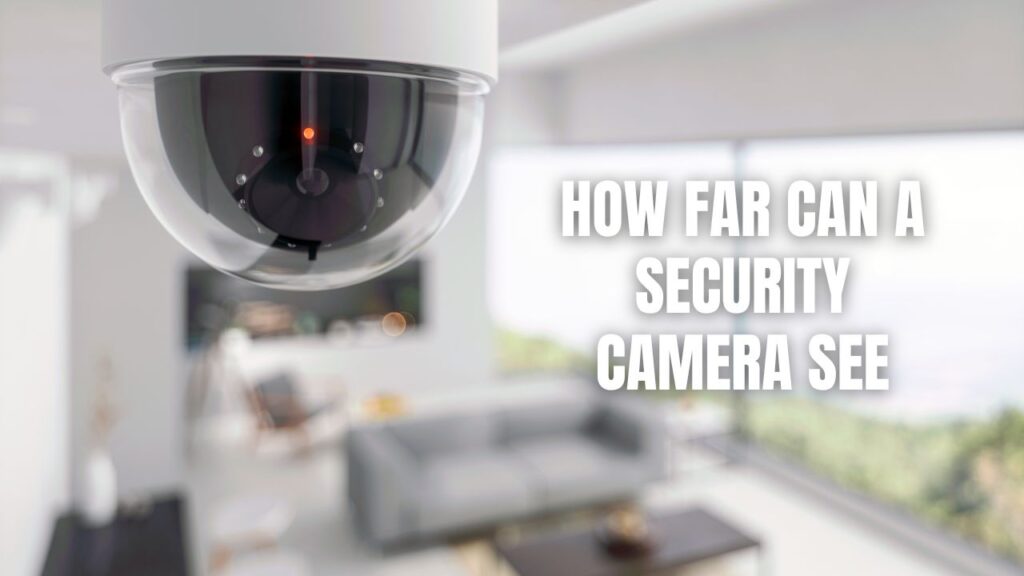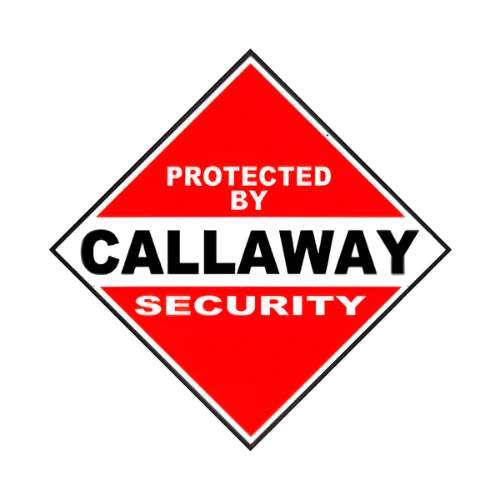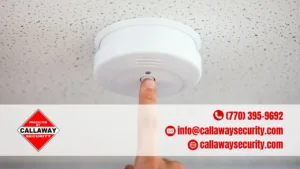The distance a security camera can see depends on factors like camera type, lens size, resolution, and environmental conditions. Standard security cameras typically see up to 70 feet, while high-end long-range cameras can reach 400 feet or more. Night vision cameras usually have a range of 100 to 200 feet, while thermal imaging cameras detect heat over long distances, even in complete darkness.
Security cameras come in various types, each offering different levels of visibility. From compact indoor cameras to long-range PTZ cameras, knowing their capabilities helps in choosing the best system for your security needs.
Key Takeaways:
- Regular security cameras see up to 70 feet in optimal conditions.
- Long-range cameras can reach up to 400 feet.
- PTZ (Pan-Tilt-Zoom) cameras often see over 300 feet.
- Thermal cameras detect heat, allowing vision beyond typical optical limits.
- Lens size and resolution impact visibility—larger lenses and higher resolution improve range.
- Night vision cameras typically work up to 200 feet in complete darkness.
- Environmental conditions like fog, rain, and lighting affect visibility.

Factors That Affect How Far a Security Camera Can See
1. Type of Security Camera
Different cameras offer different viewing distances:
| Camera Type | Typical Viewing Distance |
|---|---|
| Standard Security Camera | 30-70 feet |
| Long-Range Camera | Up to 400 feet |
| PTZ Camera | 100-300 feet |
| Thermal Camera | Varies, detects heat |
| Fisheye Camera | 15-20 feet (wide view) |
2. Resolution Matters
A camera’s resolution determines the clarity of objects at a distance:
- 1080p cameras provide decent visibility up to 100 feet.
- 2K cameras offer clearer details beyond 150 feet.
- 4K cameras deliver sharp images up to 250 feet or more.
3. Lens Size and Field of View
A camera’s lens affects its range and field of vision:
- A 2.8mm lens provides a wide-angle view but sees shorter distances (~50 feet).
- A 12mm lens has a narrower field of view but captures details up to 200 feet.
- Varifocal lenses allow for adjustable zoom, balancing range and clarity.
4. Night Vision Capabilities
Cameras with infrared (IR) night vision perform well in low-light conditions:
- Standard IR cameras see 100-200 feet in darkness.
- Enhanced IR cameras extend range up to 300 feet.
- Thermal cameras detect objects based on heat signatures, making them effective even in total darkness.
5. Environmental Conditions
Weather and lighting impact how far a camera can see:
- Fog, rain, and dust reduce clarity.
- Bright lighting can cause glare and overexposure.
- Shadows and low light affect motion detection and facial recognition.
Breaking Down Camera Ranges by Type
Fixed-Lens Security Cameras
- Typically see between 50 to 80 feet.
- Best for homes and small businesses.
PTZ Cameras
- Feature motorized zoom for adjustable viewing.
- Can see over 300 feet, perfect for large properties and parking lots.
Fisheye Cameras
- Capture wide-angle views, but have a limited range (15-20 feet).
- Great for indoor monitoring.
Thermal Imaging Cameras
- Detects heat instead of light, allowing vision beyond optical cameras.
- Ideal for border security, wildlife monitoring, and perimeter defense.
Additional Information About Security Camera Distance
- IR Cut Filters improve daytime clarity while enhancing night vision.
- Wireless security cameras may have shorter ranges due to bandwidth limitations.
- AI-powered cameras can identify and track movement over longer distances.
- License Plate Recognition (LPR) cameras require a high-resolution sensor to read plates clearly at distances beyond 100 feet.
- CCTV cameras in urban areas often pair with streetlights and motion sensors for better clarity.
FAQs
How far can a 1080p security camera see?
A 1080p security camera can see clearly up to 100 feet under ideal conditions. However, fine details like facial recognition may be limited beyond 50 feet.
Do security cameras work in complete darkness?
Yes, night vision cameras use infrared LEDs to capture footage in total darkness, with most models seeing between 100 to 200 feet.
Can a security camera see through glass?
Standard security cameras struggle to see through glass at night due to infrared reflection, but daytime visibility is usually clear.
What type of camera is best for long-distance viewing?
A PTZ (Pan-Tilt-Zoom) camera or a long-range bullet camera is best for distances beyond 200 feet, while thermal cameras are ideal for detecting objects even further.
How do I extend my security camera’s viewing distance?
You can improve range by:
- Using a higher resolution camera.
- Choosing a camera with a larger lens (8mm+ for long distances).
- Adding extra infrared lighting for better night vision.
- Using a PTZ camera with optical zoom.
Choosing the Right Camera for Your Needs
When selecting a security camera, consider:
- The distance you need to monitor (short-range vs. long-range).
- The level of detail required (standard vs. high-resolution cameras).
- Whether you need night vision or thermal detection.
- The weather conditions your camera will face.
By choosing the right lens, resolution, and camera type, you ensure optimal security coverage for your home or business. Whether you’re looking to monitor a driveway, storefront, warehouse, or backyard, there’s a security camera designed to meet your needs!
For security camera installation and monitoring in Atlanta, Alpharetta, and nearby areas, contact Callaway Security™ today!












